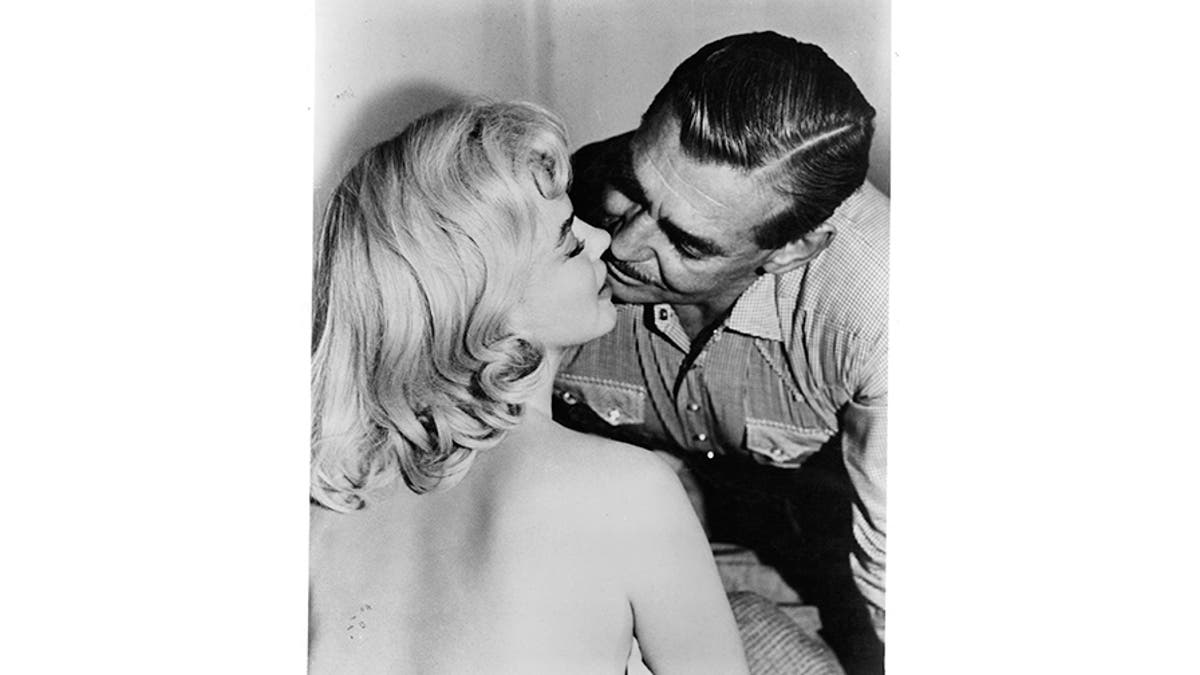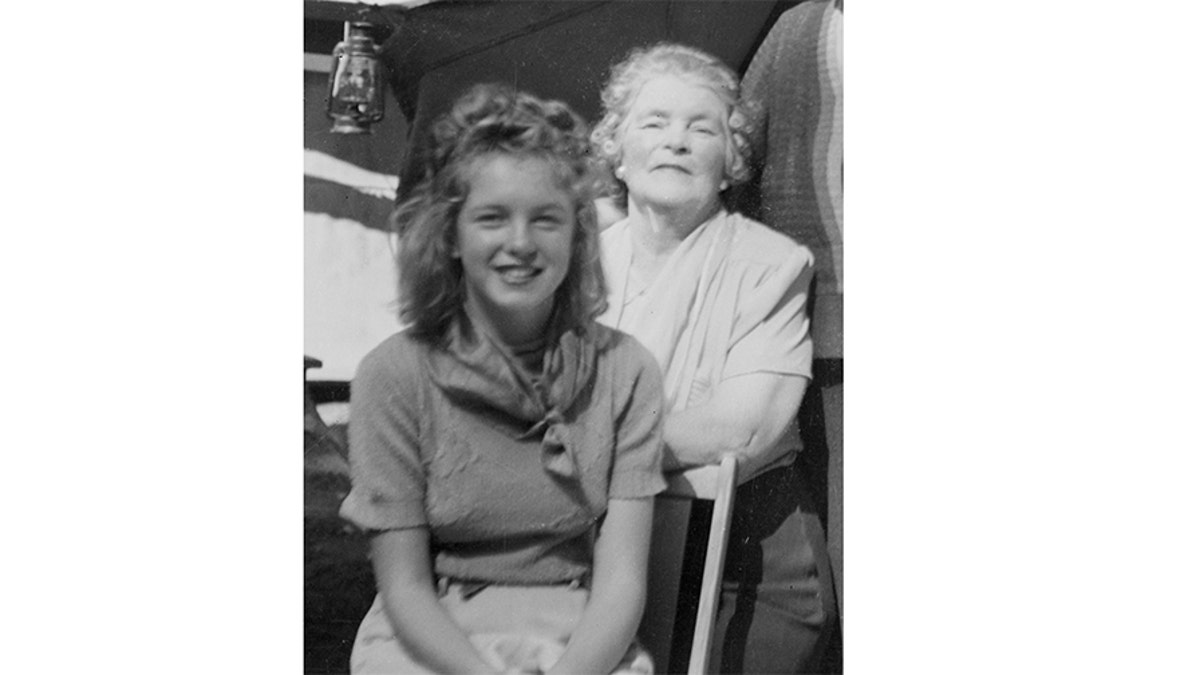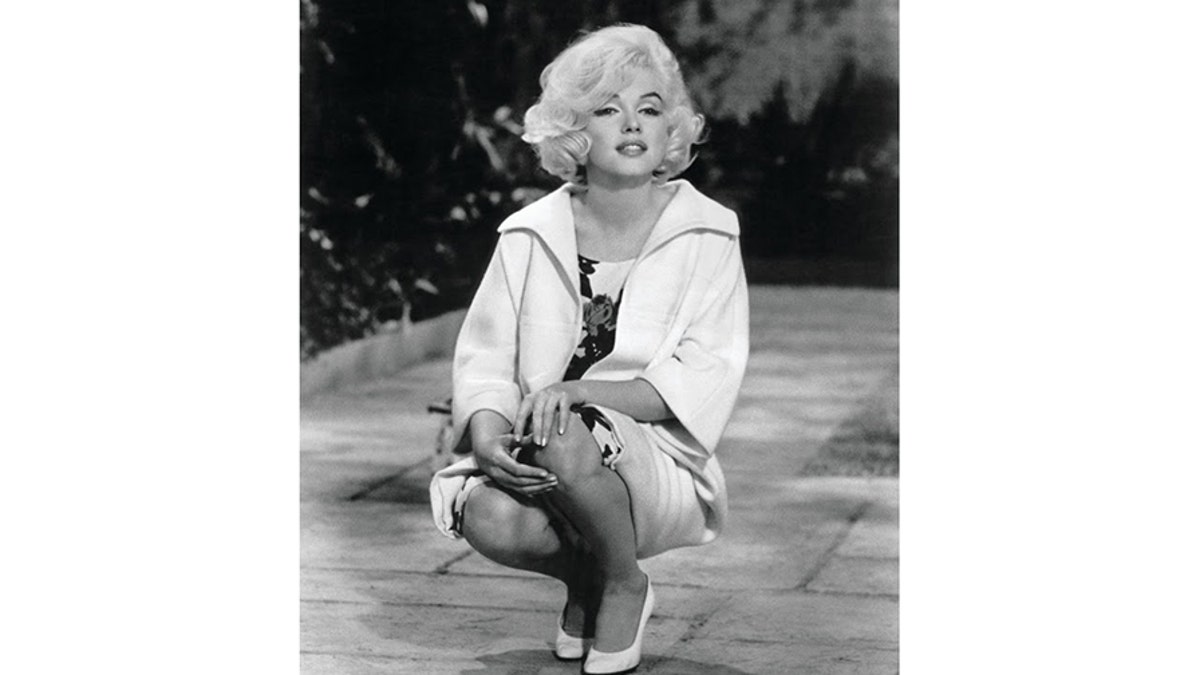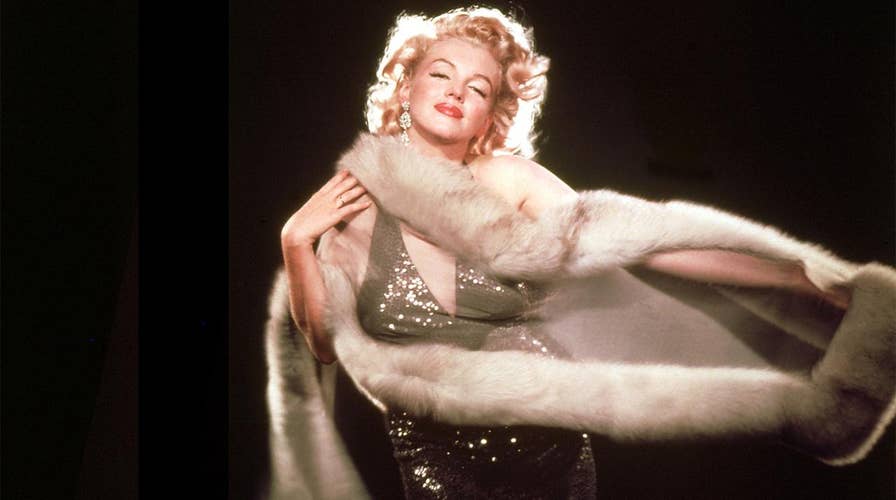Marilyn Monroe's lost nude scene has been found
Marilyn Monroe filmed a racy scene to please audiences, book claims.
When Marilyn Monroe filmed her last completed movie, 1961’s “The Misfits,” she chose to strip down opposite Clark Gable — a scene that director John Huston decided not to include.
But 57 years later, the blonde bombshell’s infamous nude scene, which many believed was destroyed, has been uncovered.
Charles Casillo, who wrote a book about Hollywood’s most iconic sex symbol titled “Marilyn Monroe: The Private Life of a Public Icon,” tracked down some of the last living people who befriended Monroe before she passed away in 1962 at 36.
During his research, the author arranged an interview with Curtice Taylor, the son of the film’s producer, Frank Taylor. It was then that the 71-year-old revealed the sought-after footage has been stored away in a filing cabinet since his father died in 1999 at age 83.
“[Curtice Taylor] was a child when ‘The Misfits’ was being made, and he was on the set,” Casillo told Fox News. “He knew Marilyn a little bit… So I was interviewing him about that. While we were talking, he just mentioned casually that he had the famous nude scene that people thought was destroyed, that was long speculated about.
“He just said it so casually, I don’t think he realized what it was… I knew it was something special, and I just was really excited about it. It was one of the things that I was unable to uncover for the book.”

Marilyn Monroe filming "The Misfits" opposite Clark Gable. (Getty)
“The Misfits,” which was written by Monroe’s then-husband, playwright Arthur Miller, told the story of a divorcee who falls for an over-the-hill cowboy who is struggling to maintain his lifestyle. The love scene called for Monroe to be in bed as Gable walks into the bedroom to kiss her. But the actress had an idea to heat things up.
“In one take, she let the sheet drop,” described Casillo. “Marilyn Monroe was so insecure. She always wanted people to like her. The one thing that she was rock solid in, with her lack of confidence, she knew that her physicality was pleasing to people, that people liked to look at her, and people liked to look at her body.”
However, Huston was not swayed by a naked Monroe. Despite Miller, Taylor and Gable insisting that Monroe’s take would break new ground for the film, Huston felt it was too distracting. The scene ended up on the cutting room floor.

Marilyn Monroe on her way to sing "Happy Birthday" to President John F. Kennedy. (Private collection of Charles Casillo)
“The movie was being made in 1960,” pointed out Casillo. “It would have ushered in everything that was going to happen in the late ‘60s with nudity, and the fall of censorship.
"But John Huston … had the final say. He decided not to keep the scene in. He used a different take. The producer, Frank Taylor, thought that it was so groundbreaking and extraordinary that a major mainstream actress would do that, he saved it.”
Casillo added that Curtice is being “very, very cautious” with the footage, which is in mint condition and includes sound. Taylor, who was still hopeful the scene would make the final cut, had it fully edited and prepped for viewing.

Marilyn Monroe's turbulent childhood caused the movie star to become very insecure over the years. (Photofest)
“We don’t know for sure if it will ever be released,” admitted Casillo. “But with the amount of interest in Marilyn Monroe… I can’t say how, where or when, but it will not be kept under wraps forever. Somehow, some way, this will be seen.”
Monroe never got the chance to be the star of the first nude scene in a major American movie. In 1961, she and Miller called it quits. Monroe, who was battling a crippling depression, anxiety and low self-esteem, was under the round-the-clock care of a psychiatrist.
It was reported that around this time the actress was also struggling with substance abuse, as well as physical ailments, including endometriosis, which resulted in a public miscarriage during her marriage to Miller.

Marilyn Monroe filming "Something's Got to Give." (Private collection of Charles Casillo)
Then in 1962, Monroe, who was in the middle of filming “Something’s Got to Give,” was fired from the romantic comedy after she was consistently late or absent for days at a time. She would be found dead from an apparent overdose just two months later.
Casillo described Monroe’s last day alive as “chaotic.”
“She had been living a very chaotic and frantic existence in her last months,” he explained. “She was on a downward spiral… She was 36 years old, and for her, that was devastating… In that era, a sex symbol, a love goddess, like Marilyn was, to be 36 was considered to be at the end of her rope.
"For someone like Marilyn [whose] whole identity and whole persona came from being sensual… the idea of losing that was very frightening to her… Also on the last day, she was furious about a lot of things… She was very angry, she was very frightened.”
On the night before she died, Monroe met a 25-year-old Warren Beatty, who was a mutual friend of fellow actor Peter Lawford. While the now-81-year-old actor told Vanity Fair in 2016 that he “hadn’t seen anything that beautiful,” the buxom blonde felt differently about herself.
“From her point of view, she was over the hill, because that’s what the media was saying about her,” said Casillo. “… She said, ‘I’m 3-6 and I’m frightened.’ She couldn’t even say her age. That’s how devastating it was for her… She said, ‘My life is becoming more and more disorganized. I’m becoming more and more unable to sleep. I’m up all night and I’m sleeping during the day. Everything I try, I just can’t control it.'"
Casillo claimed the conversation haunted Beatty for years.
“He was also known for his beauty and sex appeal,” said Casillo. “He started wondering, ‘What will happen when I lose it? Will I be in the same situation that Marilyn Monroe is in? … Will I have friends? Will people still love me?’”
Beatty himself said he noticed Monroe was “already tipsy from the champagne” even “before the sun had set.”

Marilyn Monroe and her mother Gladys. (Private collection of Charles Casillo)
Casillo shared part of Monroe’s emotional turmoil stemmed from her life-long quest to develop a relationship with her father after enduring an erratic childhood in a series of foster homes where she was sexually abused, only to be brutally rejected.
“She was born illegitimately and her mother was in and out of mental institutions,” he explained. “… Her mother would show her a photo of a man with a fedora, a handsome guy, saying, ‘This is your father.’ At that time, Marilyn was shuffled from one foster home to another.
"She was in orphanages. She felt like she didn't belong anywhere, and her father came to represent security and someone who would love her and take her away from the kind of miserable existence that she had.

Marilyn Monroe's father. (Photofest)
“… When she became an adult, she did try to contact him, and he wouldn’t talk to her. He wouldn’t see her. He said, ‘Talk to my lawyer.’ So he wouldn’t recognize her as being his daughter. I think that Marilyn spent her whole life trying to find a man to be a substitute for her father, someone who would be a savior, someone who would protect her, someone who would comfort the little girl that was always inside of her.”
Toward the end of her life, Monroe received an unlikely phone call from her alleged rival — Elizabeth Taylor. The actress, who was filming 1963’s “Cleopatra,” reached out to Monroe from Rome after hearing she had been fired from “Something’s Got to Give.”
“She said, ‘Marilyn, everything that you’re going through, I’ve gone through,’” said Casillo. “‘…I will walk off this film in solidarity with you. I’ll call the press, I’ll tell them I’m walking off because Marilyn is being treated unfairly.’ That’s astonishing to find out about Elizabeth Taylor that she… would hold up this epic movie, tens of millions of dollars in debt, to help Marilyn.”
Monroe declined the offer, explaining there was no reason for both actresses to hurt their careers. But Taylor offered one piece of advice.
“She said, ‘No matter what they say about me, no matter how they criticize me, I just smile and I keep on walking,’” claimed Casillo. “‘Just smile and keep on walking.’ Elizabeth Taylor was able to do that. Marilyn wasn’t.”







